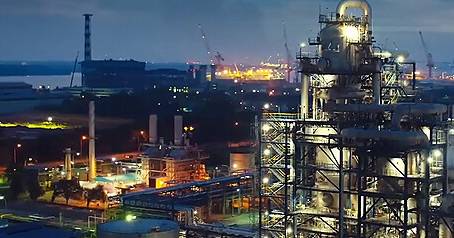Dec . 15, 2024 06:58 Back to list
Different Types of Pressure Control Valves and Their Applications
Understanding Pressure Control Valve Types
Pressure control valves are fundamental components in various industrial applications, playing a critical role in maintaining desired pressure levels within systems. These valves help regulate pressure to ensure optimal performance, safety, and efficiency in processes. Different types of pressure control valves cater to a multitude of requirements, each designed with specific functionalities. This article discusses the various types of pressure control valves and their applications.
1. Relief Valves
Relief valves are designed to prevent system overpressure, protecting equipment and personnel from potential hazards. They operate by releasing excess pressure automatically when it exceeds a predetermined limit. This type of valve typically features a spring-loaded mechanism that opens the valve when the preset pressure threshold is achieved, allowing fluid to escape and thereby reducing the pressure in the system. Relief valves are commonly used in boiler systems, hydraulic systems, and gas pipelines.
2. Pressure Reducing Valves
Pressure reducing valves (PRVs) play a crucial role in reducing and maintaining pressure downstream of the valve. They are commonly utilized in water supply systems, natural gas systems, and steam applications. A typical PRV operates by monitoring the downstream pressure and adjusting the flow of the upstream pressure accordingly. When the downstream pressure falls below a specified level, the valve opens to allow additional flow, and when it exceeds the set pressure, the valve closes, maintaining a consistent pressure level.
Backpressure valves are used to maintain a specific pressure in a system while allowing excess flow to be redirected. They operate similarly to relief valves but differ in function; backpressure valves help maintain the upstream pressure instead of simply releasing excess pressure. This type of valve is widely used in processes such as wastewater treatment, where maintaining a consistent back pressure is essential for optimal flow and treatment efficiency.
pressure control valve types

4. Pilot-Operated Valves
Pilot-operated pressure control valves use a smaller pilot valve to control the larger main valve. This design allows for greater precision and efficiency in pressure regulation. When the pressure in the system deviates from the set point, the pilot valve adjusts, which in turn operates the main valve to correct the pressure. Pilot-operated valves are beneficial in systems with varying pressure demands and are commonly found in water management and hydroelectric systems.
5. Electronic Pressure Control Valves
With advancements in technology, electronic pressure control valves have emerged as a modern solution for precise pressure regulation. These valves are equipped with electronic sensors that continuously monitor the pressure within a system. When fluctuations occur, the valve's actuators adjust the position accordingly to maintain the desired pressure. Electronic valves are prevalent in sophisticated applications such as semiconductor manufacturing, where exact pressure control is vital for product quality.
6. Sustained Pressure Control Valves
These valves are designed to maintain a specific set pressure in systems that require consistency over time, regardless of varying flow conditions. They are particularly valuable in applications where pressure fluctuations can negatively affect the process and product quality. Sustained pressure control valves are often utilized in pharmaceutical manufacturing and food processing industries to ensure compliance with stringent regulatory standards.
Conclusion
Selecting the appropriate pressure control valve for a specific application is crucial for system efficiency, safety, and reliability. Each type of valve—whether it be relief, reducing, backpressure, pilot-operated, electronic, or sustained pressure control—serves a unique purpose and is tailored to meet the demands of various industrial processes. Understanding the functions and applications of these valves not only aids in effective system design but also enhances operational performance while ensuring compliance with safety regulations. In an ever-evolving industrial landscape, staying informed about the latest valve technologies and their applications is essential for engineers and technicians alike.
-
Y Type Strainer Maintains System Efficiency Long TermNewsJul.15,2025
-
Valve Selection Guide for Industrial ApplicationsNewsJul.15,2025
-
Steel Fab Table Provides Durable Work Surface for WeldingNewsJul.15,2025
-
Pad Iron Provides Stable Support for Heavy MachineryNewsJul.15,2025
-
One Inch Check Valve Fits Standard Plumbing SystemsNewsJul.15,2025
-
Measuring Micrometer Ensures Precise Dimensional AccuracyNewsJul.15,2025
Related PRODUCTS









